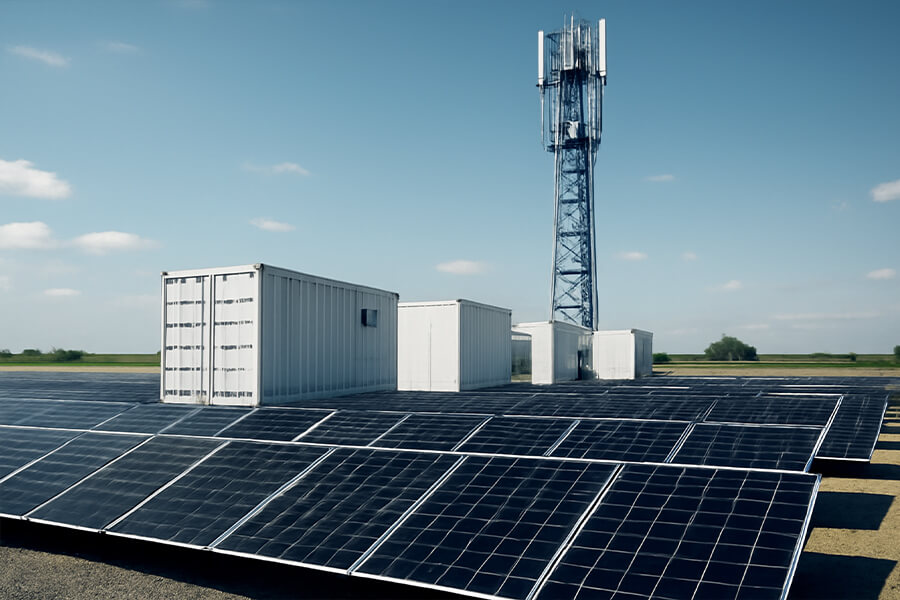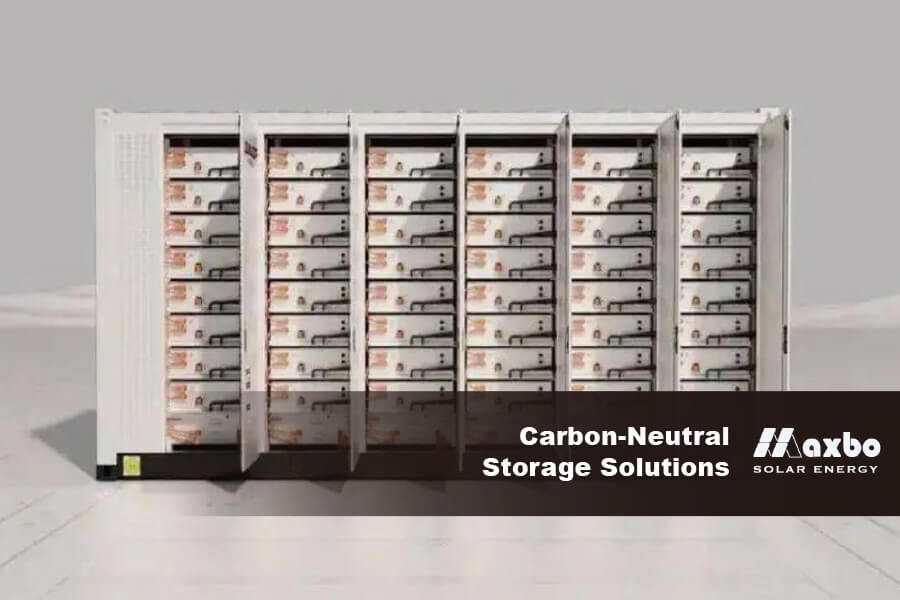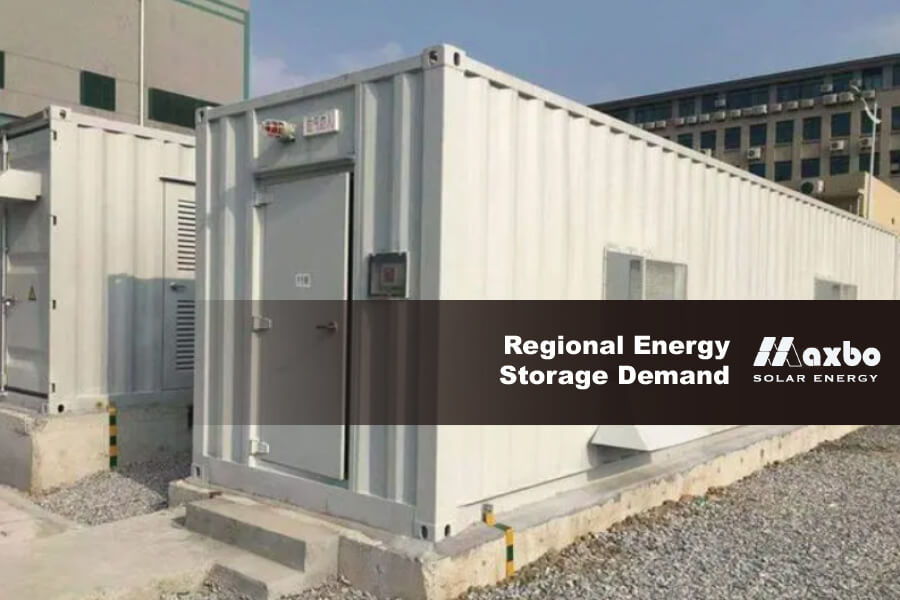As the energy sector continues to evolve, stabilizing the grid remains a critical challenge. Battery Energy Storage Systems (BESS) have emerged as a game-changer in maintaining grid stability and efficiency. In 2024, the implementation of a BESS system for grid stabilization is more important than ever. At Maxbo, we provide cutting-edge BESS solutions tailored to enhance grid performance. This comprehensive guide will delve into how a BESS system for grid stabilization functions, its benefits, and why Maxbo is the ideal partner for your grid stabilization needs.
What Is a BESS System for Grid Stabilization?
A BESS system for grid stabilization combines advanced battery technology with sophisticated energy management tools to support and stabilize the electrical grid. By storing excess energy during periods of low demand and discharging it during peak times, a BESS system helps balance supply and demand, integrate renewable energy sources, and enhance grid reliability.
Key Components of a BESS System for Grid Stabilization
To fully understand the role of a BESS system for grid stabilization, it’s essential to look at its core components:
- Batteries: The primary component of a BESS system for grid stabilization, batteries store electrical energy for later use. Lithium-ion batteries are commonly used due to their high energy density, longevity, and efficiency.
- Inverters: These devices convert the direct current (DC) generated and stored by the batteries into alternating current (AC), which is compatible with the grid’s requirements.
- Energy Management System (EMS): An EMS is crucial for a BESS system for grid stabilization. It manages the flow of energy, optimizing when and how much energy is stored or released based on grid demands and conditions.
- Charge Controllers: These controllers regulate the charging process of the batteries, ensuring that they are charged efficiently and safely, thus extending their operational life.
How a BESS System for Grid Stabilization Enhances Grid Performance
Integrating a BESS system for grid stabilization offers a multitude of benefits, contributing significantly to the overall efficiency and stability of the grid. Here’s how a BESS system for grid stabilization can enhance grid performance:
1. Balancing Supply and Demand
One of the primary functions of a BESS system for grid stabilization is to balance energy supply and demand. By storing excess energy during periods of low demand and releasing it during peak times, these systems prevent grid overloads and shortages. This balancing act ensures a steady supply of electricity, reducing the risk of blackouts and improving the reliability of power delivery.
Reference: U.S. Department of Energy – Energy Storage for Grid Stability
2. Supporting Renewable Energy Integration
Renewable energy sources, such as solar and wind, are inherently intermittent. A BESS system for grid stabilization can store excess energy generated by these sources when production exceeds demand and discharge it when production is low. This capability facilitates the integration of higher levels of renewable energy into the grid, supporting a transition to cleaner energy sources and reducing reliance on fossil fuels.
Reference: International Renewable Energy Agency – Energy Storage and Renewables
3. Enhancing Grid Resilience
BESS systems for grid stabilization contribute to grid resilience by providing backup power during disruptions. In the event of a power outage, natural disaster, or other emergency, a BESS system can supply critical power to essential services, helping to maintain operations and support quicker grid recovery.
Reference: EnergySage – Benefits of Energy Storage
4. Improving Frequency Regulation
Maintaining the correct frequency is crucial for grid stability. A BESS system for grid stabilization can quickly respond to frequency fluctuations by absorbing excess energy when the grid frequency is high and releasing energy when the frequency drops. This real-time adjustment helps keep the grid operating within its required frequency range, ensuring stable and reliable power.
Reference: Clean Energy Council – Frequency Regulation and Energy Storage
5. Reducing Energy Costs
Energy storage can help reduce overall energy costs. By storing energy during periods of low-cost and using it during high-cost periods, a BESS system for grid stabilization helps lower energy expenses. This feature is especially valuable for grid operators and utility companies looking to optimize their financial performance.
Reference: Fraunhofer ISE – Cost Benefits of Energy Storage
6. Providing Voltage Support
Voltage stability is another critical aspect of grid management. A BESS system for grid stabilization can support voltage regulation by injecting or absorbing reactive power. This functionality stabilizes voltage levels across the grid, preventing voltage sags or surges that can impact power quality and reliability.
Reference: European Commission – Voltage Control with Energy Storage
7. Facilitating Demand Response Programs
Demand response programs are designed to manage energy consumption during peak periods. A BESS system for grid stabilization supports these programs by storing energy during low-demand times and discharging it during high-demand periods. This capability helps reduce the need for additional peaking power plants and lowers overall energy costs.
Reference: SolarPower Europe – Demand Response and Energy Storage
8. Supporting Microgrid Operations
Microgrids are localized energy systems that can operate independently from the main grid. BESS systems for grid stabilization are essential for microgrid operations, providing energy storage and backup power to ensure reliability and stability within these smaller, self-sustaining grids.
Reference: Electrek – Energy Storage for Microgrids
9. Enhancing System Efficiency
A well-designed BESS system for grid stabilization improves overall grid efficiency. By optimizing energy storage and discharge, these systems reduce energy losses and enhance the effectiveness of energy distribution, leading to a more efficient and reliable power system.
Reference: KfW Bank – System Efficiency and Energy Storage
10. Supporting Grid Modernization
Modernizing the grid involves integrating advanced technologies to improve performance and reliability. A BESS system for grid stabilization is a crucial component of this modernization effort, providing the necessary tools to support a more dynamic and responsive grid infrastructure.
Reference: PV Magazine – Modernizing the Grid with Energy Storage
Why Maxbo Offers the Best BESS Systems for Grid Stabilization
At Maxbo, we are dedicated to providing the best BESS systems for grid stabilization. Our solutions are designed to deliver superior performance, reliability, and cost-effectiveness. Here’s why Maxbo stands out in the BESS market:
Maxbo’s BESS Solutions
- Advanced Technology: Our BESS systems for grid stabilization feature the latest in battery technology and energy management systems, ensuring optimal performance and reliability.
- Factory-Direct Pricing: We offer competitive pricing directly from the factory, providing exceptional value for your investment in grid stabilization technology.
- Comprehensive Support: Maxbo provides full support from initial consultation to installation and ongoing maintenance, ensuring that your BESS system for grid stabilization operates at peak efficiency.
- Customized Solutions: We offer tailored BESS solutions designed to meet the specific needs of grid operators and utility companies across Europe, ensuring that our systems integrate seamlessly into your existing infrastructure.
To explore how Maxbo’s BESS systems for grid stabilization can enhance your grid performance and stability, visit Maxbo Solar and discover our innovative solutions.
Conclusion: The Impact of BESS Systems for Grid Stabilization
Incorporating a BESS system for grid stabilization is crucial for maintaining a stable and efficient electrical grid. By balancing supply and demand, supporting renewable energy, and enhancing grid resilience, these systems play a vital role in modernizing and optimizing energy infrastructure. Maxbo is committed to offering the best BESS systems for grid stabilization, tailored to meet the needs of European customers and contribute to a more reliable and resilient grid.
Visit Maxbo Solar today to learn more about our advanced BESS systems for grid stabilization and see how we can support your energy goals.
References:
- U.S. Department of Energy – Energy Storage for Grid Stability
- International Renewable Energy Agency – Energy Storage and Renewables
- EnergySage – Benefits of Energy Storage
- Clean Energy Council – Frequency Regulation and Energy Storage
- Fraunhofer ISE – Cost Benefits of Energy Storage
- European Commission – Voltage Control with Energy Storage
- SolarPower Europe – Demand Response and Energy Storage
- Electrek – Energy Storage for Microgrids
- KfW Bank – System Efficiency and Energy Storage
- PV Magazine – Modernizing the Grid with Energy Storage










